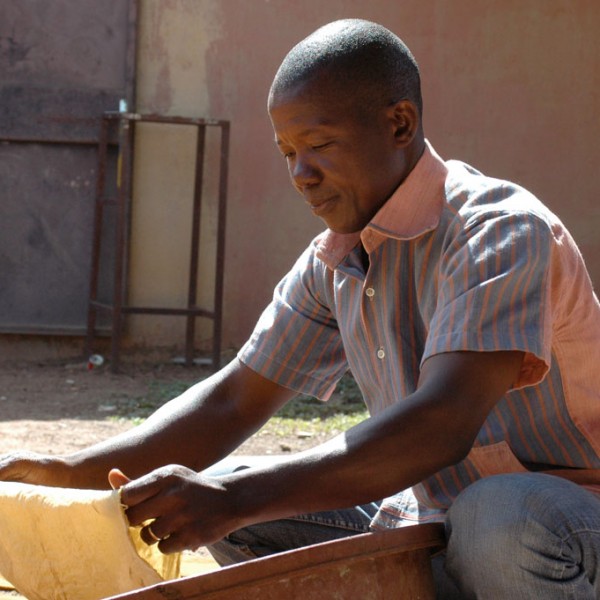
In Ouagadougou, I have met with Zakaria and spent a second day with him to find out what the bogolan is.
Bogolan literally means “done from mud”, “bogo” in the Bambara language meaning “earth”, or “clay” and “lan” meaning “derived from”.
This fabric which requires such a specific dyeing technic has been used for hundreds of years in West Africa. It is found mainly in Mali and Burkina Faso. Since the 80s, bogolan has been enjoying a growing success in the modern African clothing, used for loincloths for women or tunics for men. It is also used for home decoration, as a blanket or a wall hanging. It is still very much worn by the Dogon, Bobo, Senufo or Bambara ethnic tribes, each one of them developping their own style and patterns.
Bogolan is always a more or less thick cotton fabric. Traditionally, it is composed of narrow hand-woven pieces on narrow looms and then all sewn together.
The most striking are the colors and harmonies so particular and recognizable: yellow ocher, brown, black, white, with sometimes red touches. An apparent simplicity of neutral tones, earthy and mineral. Zakaria has shown me how to get the main color, the yellow ocher, obtained from a concoction of the African birch leaves (n’galama). The more you deep dive the fabric into the dyeing, the more the color gets saturated and deep. The fabric is then dried in the sun to fix the color.
Then you use the fermented clay taken straight from the jars burried in the ground and you apply it to the fabric with a brush or a pen, by hand or through a stencil. The fermented mud in contact with the ocher base will then chemically react while drying up to give after rinsing a very dense and indelible black color. While traditional bogolans are usually in a two tone contrast playing on yellow and black, it is possible to add white touches by a bleaching process, using a mixture of chlorine, shea and soap; dark red touches can also be obtained through the a concoction of the African grapetree barks (n’pecou), and brown touches by using a locust-tree leaves dyeing.
Contemporary bogolans have lost most of their symbolic meaning and authenticity to become purely decorative graphics textiles. Originally, each drawing had a meaning. It was inspired by nature, daily life in Africa… Each piece was designed for a specific ritual purpose like wedding or hunting ceremonies.
Coloring and drawing with the help of sun, water, clay and plants to create fabrics with endless decorative possibilities, that’s what bogolan is. When you find out how bogolans are made, you then better understand their inner strength and depth of their colors. By touching them, you get a glimpse of something vital, fed by the earth and the light of Africa.











